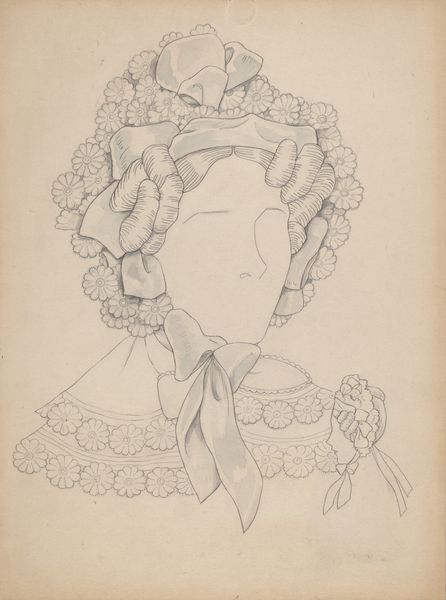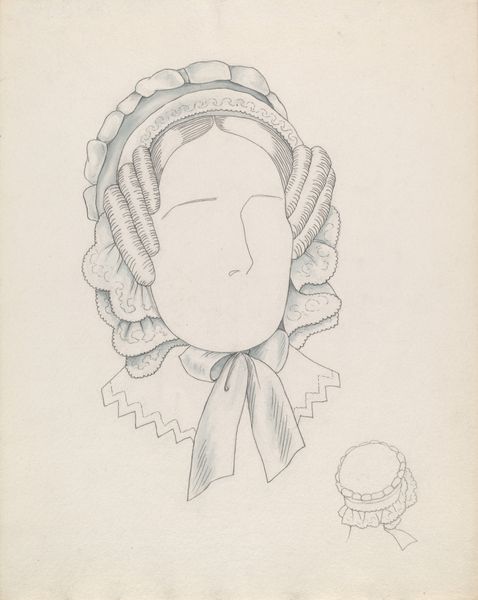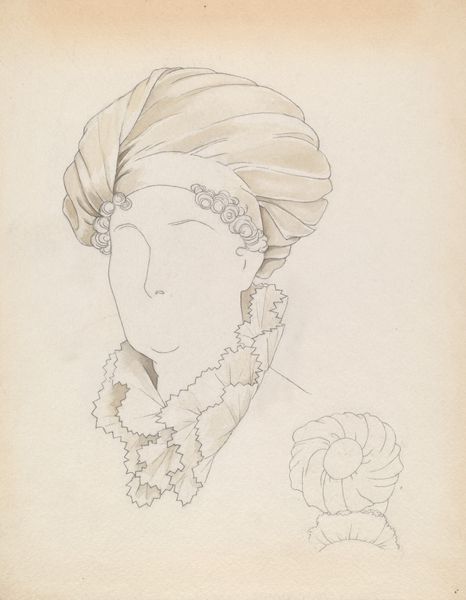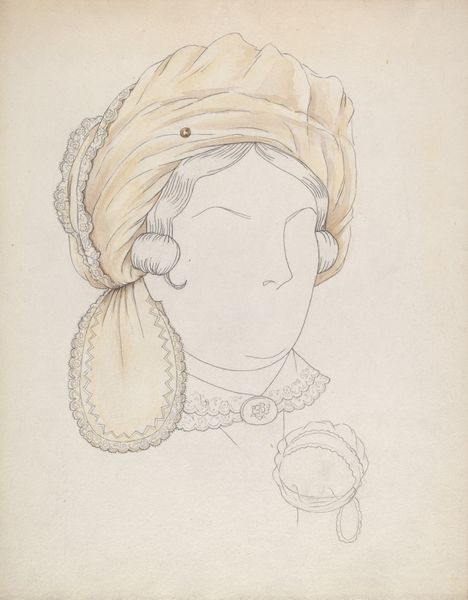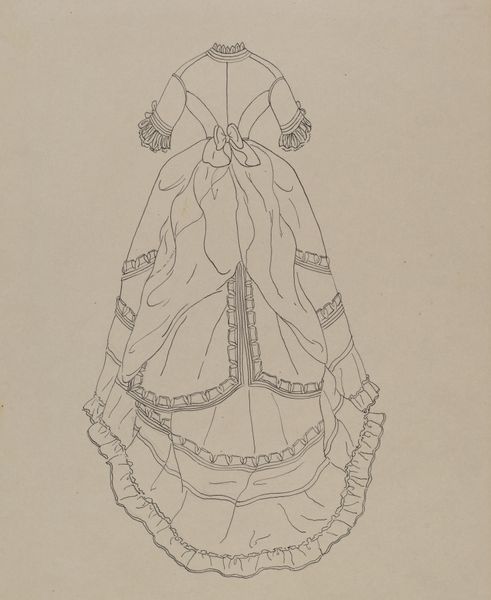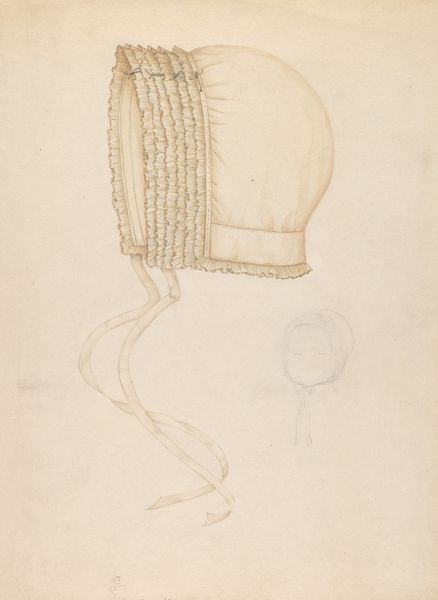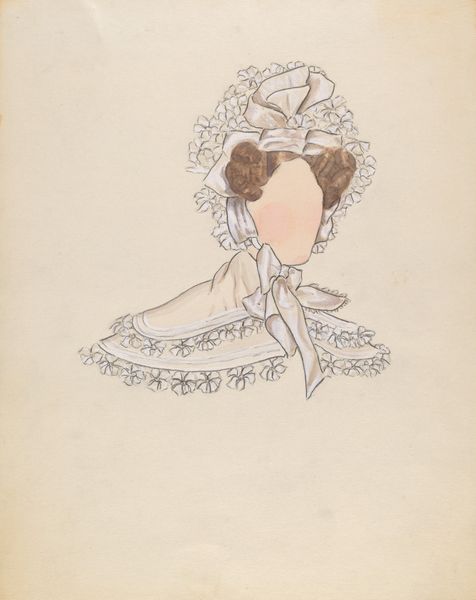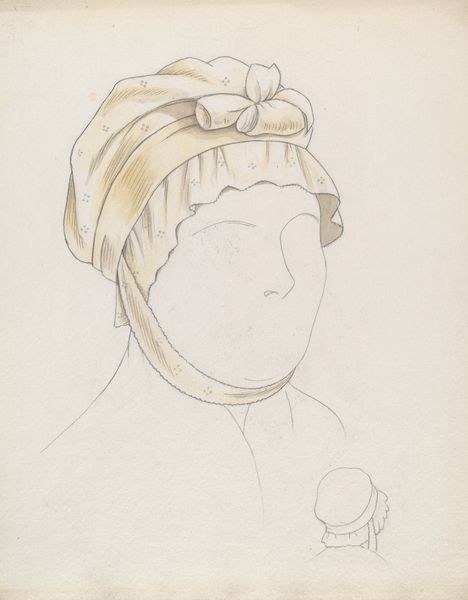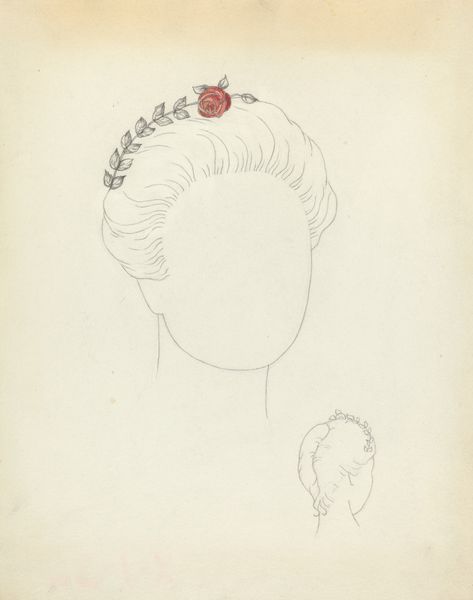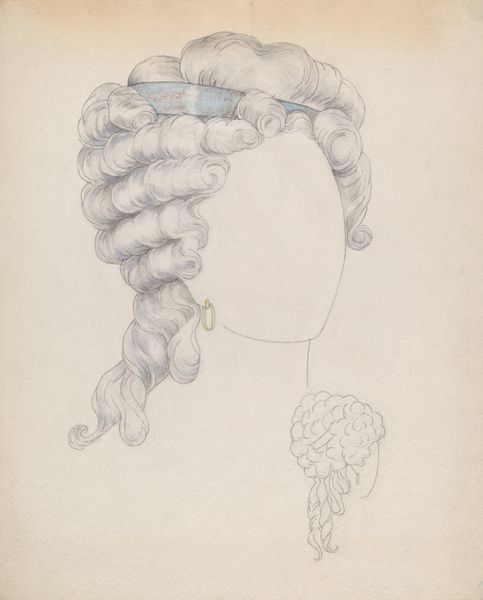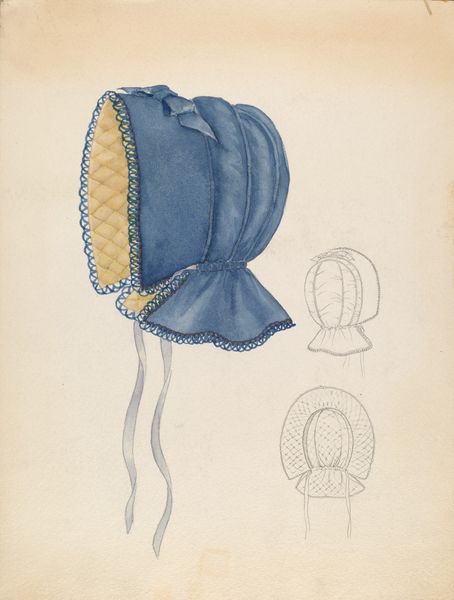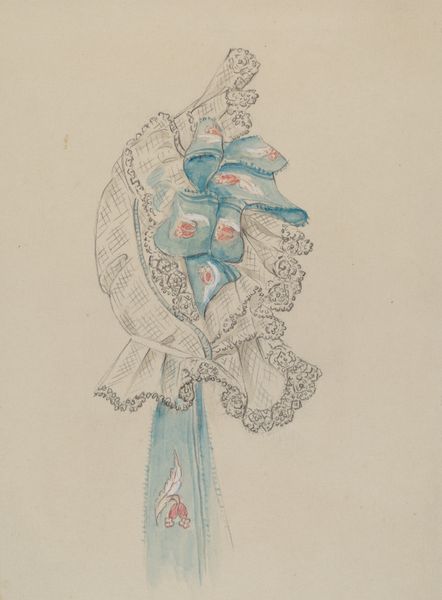
drawing, paper, pencil
#
portrait
#
pencil drawn
#
drawing
#
imaginative character sketch
#
toned paper
#
light pencil work
#
pencil sketch
#
old engraving style
#
figuration
#
paper
#
personal sketchbook
#
pencil
#
sketchbook drawing
#
pencil work
#
academic-art
#
sketchbook art
Dimensions: overall: 28.3 x 22.7 cm (11 1/8 x 8 15/16 in.)
Copyright: National Gallery of Art: CC0 1.0
Art Historian:Editor: Editor: So, this drawing is called "Headdress," and it's from around 1937. It looks like it’s pencil on paper. I am really struck by how delicate the drawing is, especially the ruffles, they look like fabric! How do you interpret this work? Art Historian: The delicacy you noted is crucial. As a materialist, I immediately think about the socio-economic context informing those meticulous details. Lace, historically, signaled wealth due to the labor involved in its production. What do you notice about how the artist has rendered that texture and form using such simple means? Editor: Well, the artist uses really light pencil strokes and layering to give the impression of volume and shadow, especially on the headdress and the ruff around the neck. Is the artist using the pencil strokes to create something more than just an accurate rendering? Art Historian: Exactly. Consider the implications of rendering such a visually opulent item - a headdress dripping with lace - through such a relatively humble, mass-produced medium like pencil. It highlights a potential tension. Who could afford such luxury versus who is making it, and how are those power dynamics manifested in the materials and production of the artwork itself? Editor: That's a great point. So, is the artist perhaps commenting on social class through their choice of materials and subject matter? Art Historian: Precisely. The drawing becomes an exploration of consumption, production, and social status all at once. Do you think the date, around 1937, adds any weight to this interpretation? Editor: Yes, that was the tail end of the Depression era in America and the lead-up to the war. This interpretation really reframes how I see the drawing; it's less a simple sketch, and more a commentary. Art Historian: Agreed. It's a reminder that artmaking is always entangled with material conditions and the social landscape. By thinking through those relationships, we can discover a wealth of new insights.
Comments
No comments
Be the first to comment and join the conversation on the ultimate creative platform.
